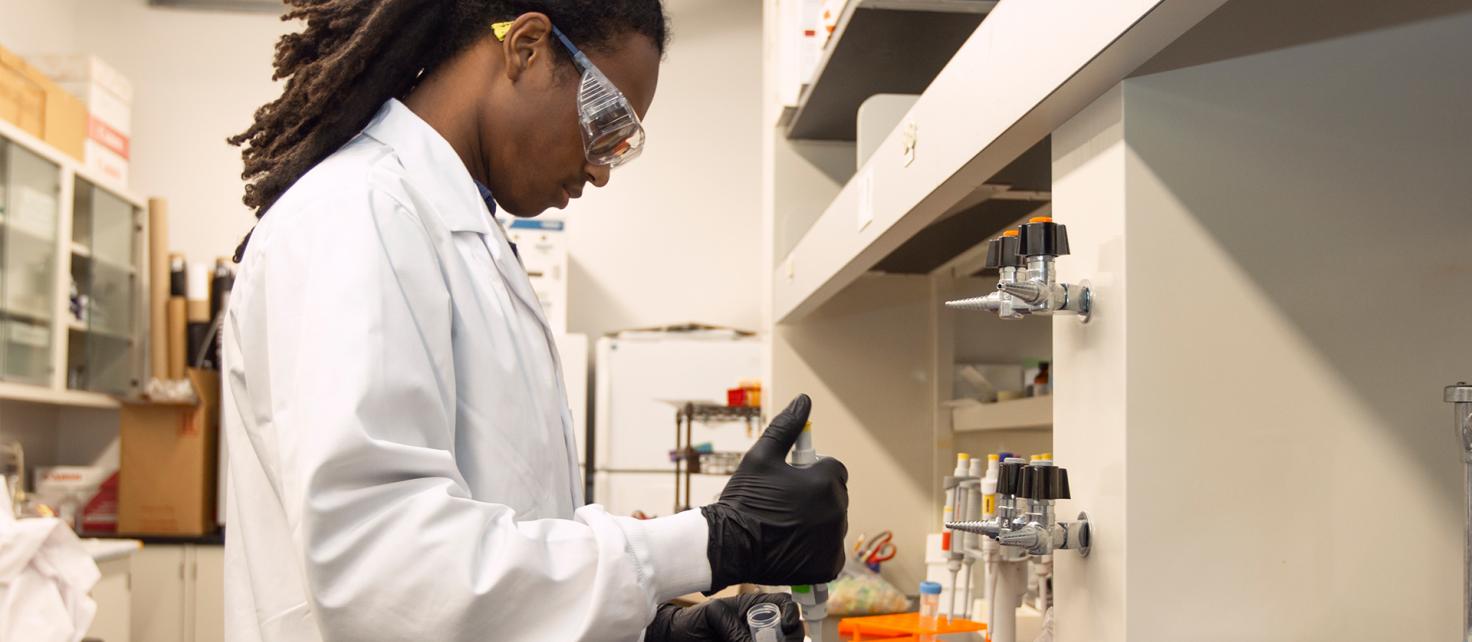Did you know that cells have a sex?
How might a difference in sex affect an individual’s response to medication at the cellular level?
“There has been a lot of interest in looking at sex as a variable in biomedical research, particularly how that affects treatments and drug therapy strategies,” says Julian Gilmore an MSc student in Professor Reina Bendayan’s lab at the Leslie Dan Faculty of Pharmacy, University of Toronto.
The Bendayan lab specializes in examining how drugs used to treat Human Immunodeficiency Virus (HIV) distribute in the body, particularly their interaction with drug-transporters and metabolic enzymes in tissues like the brain. In recent years, accessibility to HIV medications, known as antiretroviral drugs (ARVs), has shot up across the world, as have populations of ARV exposed children. According to UNAIDS, in 2018 over 80% of HIV positive pregnant women were accessing antiretroviral drugs to prevent transmission from mother to child.
‘A lot of pharmaceutical research ignores differences in sex’
While improved access to these medications is a positive trend, researchers have started to examine possible adverse effects in infants and children who were exposed to the drug in utero. One recent study based in the U.S. and Puerto Rico found that exposure to an ARV called Atazanavir was associated with lower language achievement at one year, particularly among boys .
The growing awareness of how in utero exposure to ARV drugs can affect infant development has led Gilmore to investigate the degree to which sex plays a role in toxicity, and what the underlying causes of that might be. Using animal models, Julian found novel evidence of sex-differential expression of multi-drug transporters in fetal tissues, suggesting that males and females may be exposed to different amounts of ARVs over the course of their development simply as a result of their sex.
“A lot of pharmaceutical research ignores differences in sex,” says Gilmore.
“The fact that we can identify these differences in both treatment outcomes and at the molecular level, highlights the importance of including sex as a variable in studies of drug response and toxicity.”
Encouraged by early findings, Gilmore applied for and won a travel award to attend a joint meeting of the Organization for the Study of Sex Differences and the International Society of Gender Medicine in May 2019. Held in Washington DC, Gilmore presented his work during poster sessions and networked with specialists in the field. Julian is also a recent recipient of a Canada Graduate Scholarship for research funding at the Master’s level.
“Julian is an exceptional graduate student demonstrating excellent research progress and most importantly compassion for people living with HIV, especially women and young children,” said Professor Bendayan.
Since starting his MSc in the Bendayan lab, Gilmore has come to appreciate the value of collaboration in moving research goals forward.
“Professor Bendayan establishes strong collaborations with other researchers in our Faculty and at other Universities around the world. I’ve seen how these collaborations can help to incorporate fresh ideas in research to move it forward,” he says.
Potential for impact is a source of motivation
Completing an MSc degree is challenging and tapping into a source of inspiration helps keep up momentum in the face of inevitable setbacks that are part of scientific research.
For Julian, it’s the potential to improve treatments that keeps him motivated. “This work can help guide us toward more thoughtful and effective treatments for HIV,” he says. “The field has come a long way but there is still a lot we don’t know about how these drugs are affecting minority populations, including pregnant women and children. As we continue to improve antiretroviral regimens, and as new drugs are developed, it will be important to understand how they interact with sex at the cellular level, in order to improve safety and efficacy of HIV therapy during pregnancy.”
More News
Image

Faces of PharmSci: Kinda Karra
MScPhm student Kinda Karra, working with Clinician Scientist Carlo DeAngelis, is studying why some breast cancer patients experience pain after chemotherapy and how a small blood sample could help detect signs of this reaction.
Read More
Image

Trade tariffs on pharmaceuticals ‘not the way to go’: U of T expert releases new study showing disruptions and cost increases
Trade tariffs on Canadian pharmaceuticals expected to increase costs in the U.S. and strain drug supply chains.
Read More
Image

Northern Ontario rotation inspires new perspective on pharmacy practice
Alina Montgomery’s rotation on Manitoulin Island demonstrated the importance of pharmacists in northern communities
Read More

